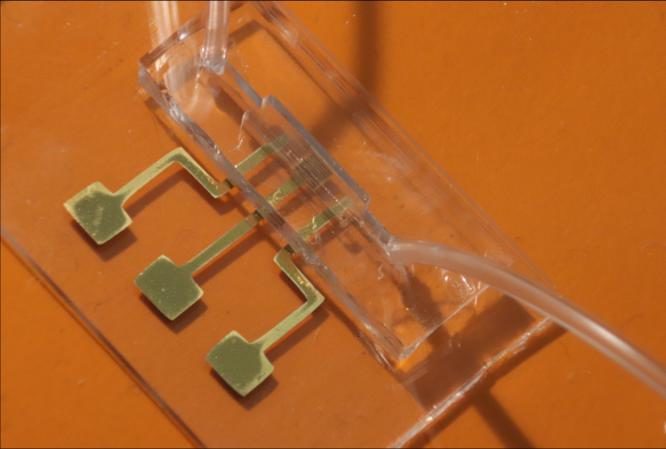Microfluidic chip detects COVID antibodies in seconds
Engineers at Pittsburgh’s Carnegie Mellon University have used 3D printing to create a microfluidic chip that detects COVID antibodies in 10-12 seconds.
Using a minuscule drop of blood of just five microlitres, the platform can identify the presence of two of the virus’s antibodies – spike S1 protein and receptor binding domain (RBD). Even low concentrations of antibodies below one picomolar (0.15 nanograms per millilitre) can be detected by the device, which relies on an electrochemical reaction within the microfluidics to send a signal to a nearby smartphone or computer. “We utilised the latest advances in materials and manufacturing such as nanoparticle 3D printing to create a device that rapidly detects COVID-19 antibodies,” said Rahul Panat, an associate professor of mechanical engineering at Carnegie Mellon who uses specialised additive manufacturing techniques across his biomedical research.
To create the device, the team used an additive technique known as aerosol jet 3D printing. Tiny, inexpensive gold micropillar electrodes were printed at nanoscale by thermally sintering aerosol droplets together. This causes a rough, irregular surface that provides increased surface area of the micropillars and an enhanced electrochemical reaction, where antibodies can latch on to antigens coated on the electrode. The specific geometry allows the micropillars to load more proteins for detection, resulting in very accurate, quick results.
According to the Carnegie Mellon team, the test has a very low error rate because the binding reaction between the antibody and antigen used in the device is highly selective, and the team was able to exploit this natural phenomenon to its advantage. In addition to detecting COVID antibodies, the platform can also be used to gauge immune response in individuals, which could prove useful as COVID vaccines are rolled out across the world.
“Because our technique can quantify the immune response to vaccination, it is very relevant in the current environment,” said Panat.
As the sensing platform is generic, it could also be used for the rapid detection of biomarkers for other highly infectious diseases such as Ebola, HIV, and Zika.
Source: The Engineer

